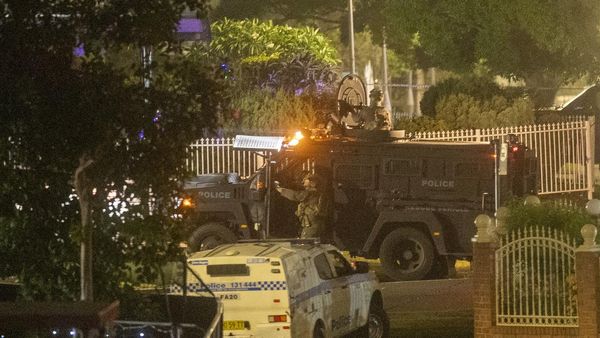The number of bail appeals filed in India’s High Courts surged post 2020, according to the ‘High Court dashboard’ by DAKSH, a think-tank focussed on law and justice system reforms. Bail appeals went up from around 3.2 lakh to 3.5 lakh each year before 2020, to 4 lakh to 4.3 lakh thereafter.
Chart 1 | The chart shows the number of fresh appeals and pending appeals in High Courts over time.
Charts appear incomplete? Click to remove AMP mode
Consequently, the number of pending bail appeals in High Courts also surged from around 50,000 to 65,000 to between 1.25 lakh to 1.3 lakh.
The data follow a July to June cycle. For instance, between July 2021 and June 2022, 4.3 lakh bail appeals were filed in High Courts.
One possible reason could be the sharp increase in cases related to the flouting of COVID-19-related lockdown norms during the pandemic. At the same time, pending bail cases piled up as the functioning of the courts was compromised during this time.
Click to subscribe to our Data newsletter
However, the exact reason cannot be ascertained from court data. The DAKSH ‘High Court dashboard’ explains that in 77% of regular bail cases, it was not possible to ascertain the Act under which the person seeking bail was imprisoned. It was not mentioned in the e-courts data of various High Courts. An analysis of 23% of cases in which the Act was mentioned shows that the Epidemic Diseases Act, 1897, was ranked fourth, hinting at the possibility of cases surging under this Act as the reason for more bail appeals.
Chart 2 | The chart shows the bail applications filed in High Courts as a share of their total caseload between July 2021 and June 2022 (in %).
The reason to understand the surge becomes paramount because in some of the States, bail appeals formed more than 30% of the caseload between July 2021 and June 2022, as shown in Chart 2. In five High Courts, i.e., in Patna, Jharkhand, Odisha, Madhya Pradesh and Chhattisgarh — bail appeals formed more than 30% of their total caseload.
Across all High Courts, DAKSH analysed 9,27,896 bail cases that were filed between 2010 and 2021. Each High Court follows a unique naming pattern for bail cases. The case type abbreviation for bail application was “BA” in Bombay and “BAIL APPL.” in Kerala. Uttarakhand had the most variation among bail case types — 18 types, where the first bail application was named BA1 and in successive applications, BA2, BA3, a unique naming pattern which no other High Court followed. In all, there were 81 case types associated with bail across the 15 High Courts analysed.
Chart 3 | The chart shows the median days taken for disposal of regular bail cases in various High Courts
The database also reveals that the median number of days taken from the filing date to the decision date for regular bail applications was 23. However, for some High Courts, the median days taken for disposal were much higher, as shown in Chart 3 . The median days for disposal of regular bail cases in the Jammu & Kashmir High Court was 156, for the Orissa High Court 61 days, and for the Bombay High Court, 56 days. Given the very high number of days it takes to dispose of bail cases (which are generally considered to not require much judicial time or deliberation), the lack of data to understand the reason for delay is worrying. “Delays in resolution have the same effect as denying bail as the accused remains in prison for the duration of their trial,” the DAKSH database argues.
Chart 4 | The chart shows the cases in which bail was granted/rejected and where the outcome was not given/unclear (in %).
Finally, data regarding the outcome of bail appeals in High Courts were also missing in many cases. In close to 80% of the disposed bail cases in all High Courts, the outcome of the bail appeal — whether it was granted or rejected — was either unclear, or the outcome was missing. For instance, in the Bombay High Court, the bail outcome of over 95% of appeals was not known, as shown in Chart 4 .
Source: DAKSH ‘High Court Data’ portal
Also read: Clear-headed approach: On the judiciary, the police and the grant of bail
Listen to our data point podcast: How Turkey’s economic and political trajectory compares to India







